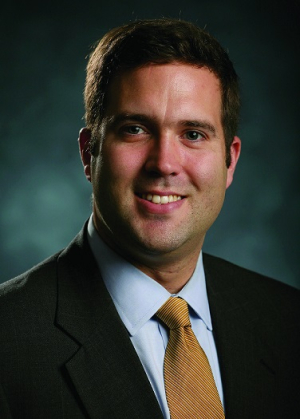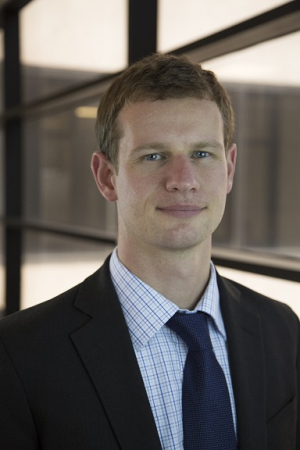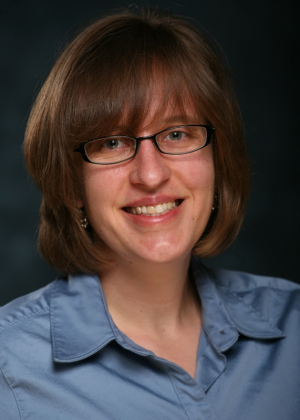Three UH Cullen College chemical and biomolecular engineering professors received funding from the Welch Foundation for their contributions to basic chemical research that benefits humankind. These three-year grants extend from 2018 to 2021.
Jeffrey Rimer earned a $330,000 award to continue his search for more effective drugs to treat kidney stone disease. Jeremy Palmer earned a $240,000 grant to further expand his postdoctoral research on unusual phase behaviors exhibited by water molecules during supercooling. Jacinta Conrad won a $195,000 grant so she can continue exploring the structure and dynamics of attractive nanoparticle glasses.
The three awards add up to $765,000 in research funding.
“New advances can only come from a better understanding of how the world works,” said Carin Marcy Barth, chair of The Welch Foundation. “Our mission as a Foundation is to support that critical basic research. It has been so rewarding to work with UH faculty – as well as scientists across the state – who are expanding knowledge at the fundamental level. Ultimately, these insights lead to solving real-world problems and improving lives.”
The Houston-based Welch Foundation is one of the largest private funding sources for chemistry research in America. Since its inception in 1954, the Foundation has given more than $64.8 million to the University of Houston.
Jeffrey Rimer
Abraham E. Dukler Professor
Title: Physicochemical Factors Governing Molecular Modification of Calcium Oxalate Crystallization
Amount: $330,000
Occasional and chronic kidney stones – which are crystal aggregates made up of mostly calcium salts that form in the kidney – affect approximately 10 percent of the U.S. population. A recent study, published in the Mayo Clinic Proceedings journal, suggests the number of patients suffering from painful kidney stones is on the rise.
Rimer earned his first Welch grant in 2012 to study mechanisms of naturally occurring biological growth inhibitors on kidney stones. The Foundation renewed his award in 2015 to explore small, organic molecules as potential drugs to treat the kidney disease. This year’s funding focuses on further developing a promising new drug Rimer’s research team recently discovered: hydroxycitrate.
“In the past 30 years there have been no advancements in therapies for kidney stone disease,” Rimer said. “We started a program with our first Welch Awards to develop new understandings of crystal growth inhibition. The primary focus has been calcium oxalate in kidney stones, which will be continued in this renewed award with a new set of objectives that switch our direction from growth to nucleation.”
The current treatment for kidney stones is an organic molecule called citrate, which is an over-the-counter supplement. Citrate acts as a mild inhibitor of the crystals but is incapable of significantly reducing stone incidence rates among patients with chronic disease.
“Understanding the factors governing the specific recognition and interactions between drug molecules and crystal surfaces helps us design more effective crystal growth inhibitors,” Rimer said. “Our group is working to develop new drugs that can supplant citrate for calcium oxalate stone disease.”
Rimer has filed a patent on the promising new drug for the treatment of kidney stones that serves as the basis for this next phase of research. He is collaborating with a nephrologist at Litholink Corporation to perform human trials and a chemical engineering professor at the University of Pittsburgh to perform computational simulations of drug-crystal interactions.
Rimer intends to leverage Welch funding for future phases of his research. For example, he and his collaborators are recruiting other researchers to conduct animal testing to determine drug efficacy in vivo, which he is looking to the National Institutes of Health (NIH) to fund.
The award funds more than three full-time graduate students to help conduct the research.
“Funding from the Welch Foundation has allowed us to expand research efforts to other areas,” Rimer said.
He’s used the funding to broaden the scope of his kidney stone work to include other types of stones that can occur – brushite and struvite – and to foster collaborations with medical and pharmacy schools to explore fundamental aspects of crystal growth, the design of new therapeutics and methods of translating this knowledge into practice.
“The results of this project have implications for improving human health, but our findings have also uncovered new fundamental insights about crystallization and mechanisms of controlling their growth and nucleation,” Rimer said. “Advancements in crystallization can have significant impact on other diseases, such as malaria and atherosclerosis, as well as diverse areas such as catalysts, adsorbents, pharmaceuticals, electronics and many others.”
Jeremy Palmer
Assistant Professor
Title: Metastable Liquid-Liquid Phase Transitions and Glass Polymorphism in Tetrahedral Fluids
Amount: $240,000
Jeremy Palmer, assistant professor of chemical and biomolecular engineering at UH Cullen College of Engineering, earned his Welch Award to expand on his postdoctoral research on the phase behavior of liquid water at low temperatures.
“We’re trying to fill a knowledge gap about the unusual behavior exhibited by some liquids –tetrahedral liquids such as water, silica and carbon – when they’re cooled near or below their normal freezing point,” Palmer said.
Water’s density anomaly is one well-known example of this unusual behavior. As liquid water cools at ambient pressure, its density increases like most simple liquids. However, at 4 degrees Celsius, water does something strange – it starts to expand and to become less dense as it cools. Although liquid water normally freezes into ice at zero C, it can be stabilized in experiments to about 42 C below zero, at which point freezing occurs too rapidly for measurements on liquid water to be performed.
Remarkably, experiments on liquid water performed slightly above this temperature reveal that it continues to defy normal liquid behavior and expand upon cooling. Many other peculiar behaviors, such as its increased compressibility upon cooling, are also observed in water at low temperatures.
Although water is the most studied substance in the world, the physical origin of its unusual behavior upon cooling continues to elude scientists. And it is not the only substance that behaves strangely: Evidence suggests that liquid forms of silicon and possibly carbon exhibit similar trends.
“These are some of the most ubiquitous and important substances on Earth,” Palmer said. “They shape almost every aspect of our natural world and life as we know it, and yet we still don’t understand why they behave the way that they do.”
With Welch Foundation support, Palmer and his research team will use state-of-the-art computer simulation techniques to study molecular models of these substances to better understand their odd behaviors. Their investigation will focus on the physical origin and broader thermodynamic implications of the liquid-liquid phase transition.
“One advantage of computer simulations is that we can directly study the behavior of model substances under conditions where two liquids may exist,” Palmer said. “Although models can’t resolve this controversy for any real material, they can provide us with understanding of the physical mechanism responsible for this behavior and help in interpreting the vast amount of experimental data already published on this topic.”
While such behavior is in principle easier to study in model systems, the possibility of it occurring in models of water had been the subject of vigorous debate for more than two decades until recently. In their 2014 Nature paper, Palmer and collaborators resolved this long-standing controversy by using computer simulation to provide the first unambiguous evidence demonstrating that at least one water model separates into two liquids at sufficiently low temperatures.
“We know for sure that two liquid phases coexist in at least one water model, but we don’t know whether or not this happens in models of other important substances such as silicon and carbon,” Palmer said. “We aim to answer this over the next few years.”
Palmer also plans to explore how and why this behavior occurs. Answering these interesting scientific questions would help to establish an understanding of the broader role that this phenomenon could play in nature’s design – if it occurs in real substances.
“The insights gained from this research will address fundamental knowledge gaps that currently frustrate interpretation of the growing body of experimental work in this field, crystal nucleation and glass transitions in tetrahedral liquids,” Palmer said.
Jacinta Conrad
Ernest J. and Barbara M. Henley Associate Professor
Title: Dynamics in Attractive Nanoparticle Supercooled Liquids and Glasses
Amount: $195,000
Jacinta Conrad is using her Welch Award to explore one of the most intriguing basic problems in physical chemistry: the nature of the glass transition.
Glasses lack long-range order and look structurally like liquids but behave mechanically like solids. In contrast, many solids are ordered crystals, in which the molecules or atoms are arranged in a regular lattice. Ordered crystals and disordered glasses can be composed of the same molecules, but their structures and how they form are very different. Despite years of research, the reasons for these differences are poorly understood among scientists.
“While we have a basic understanding of crystal formation, we don’t understand what drives the formation of glass,” Conrad said. “There is not one unifying theory that explains the phenomenon.”
For certain applications, glasses have mechanical advantages over crystals because their disordered structures are void of weak spots associated with ordered crystal structures. Conrad’s research group uses a novel colloidal model system to study the structure and dynamics of colloidal particles across the phase transition from dense liquid to glass. Their objective is to test existing theories for the glass transition, which will increase fundamental understanding and help engineers tailor mechanical properties of glasses for practical applications.
Ordinary phase transitions often involve abrupt structural changes between ordered and disordered states, such as disordered liquid water freezing to form ordered crystalline ice. By contrast, the molecules in a liquid remain disordered as the material solidifies into a glass. Likewise, there is no structural change when solid glasses melt into liquids.
In her lab, Conrad uses confocal microscopy to image colloidal particles suspended in liquids and tracks them over time with computer software. In these dense colloidal solutions, particles move when jostled or bumped by solvent molecules or by other particles, much like crowds determine motions of people pushing through them. With the microscope, researchers can observe hard, spherical particles colliding with other particles and bouncing away like billiard balls. As the number of particles increases, these dynamics become slower and slower, and the suspension behaves more and more like a solid.
Colloidal systems are popular for studying fundamental questions about phase transitions and flow behavior because they allow researchers to track every particle on the micron scale and ask detailed questions on both the structure and dynamics of every particle.
Colloidal model systems have already helped scientists develop complex colloidal fluids, which also exhibit unexpected or unusual mechanical properties. For example, toothpastes do not behave uniformly as solids or liquids but rather as some combination of them. The pastes are fluid enough to ooze from tubes but solid enough to hold their shapes atop toothbrushes. Furthermore, many biological objects, such as viruses and bacteria also studied in Conrad’s lab, are on the same micron size scale as colloids.
“We can watch every single colloid as it transitions from a disordered liquid to an ordered solid, such as crystal,” Conrad said. “But none of the theories work for glasses.”
Conrad hypothesizes that differences between the predictions of existing theories and the measurements on experimental glasses are caused by attractive interactions between the colloids, which she and her team will control in this study. In her model system, she can make the particles attractive, or sticky, by adding small polymers to her solutions. The polymers crowd the colloids, and this crowding pushes the colloids together to create an effective attraction. She plans to study the effects of these attractions in controlled settings to better reconcile the gaps between theories and experiments.
“This novel modeling system is convenient and simple, yet we can control the particle size, the distance between particles at which attractions occur and the strength of attraction,” Conrad said. “We have a few knobs to tune with this system, which allows us to ask detailed questions about existing theories.”
Over the course of this three-year grant, Conrad’s research team will test microscopic theories of the glass transition in a model for molecular liquids, confine supercooled liquids in 2-D and 3-D for testing and generate ultrastable nanoparticle glasses throw slow sedimentation for additional testing.
“This ambitious research program will open new avenues to develop fundamental insight into the nature of the glass transition,” she said.
Conrad hopes to establish the usefulness of her novel colloidal modeling system for testing existing theories and to study the glass transition in thin films and small drops, which is relevant for applications in coatings and 3-D printing.


